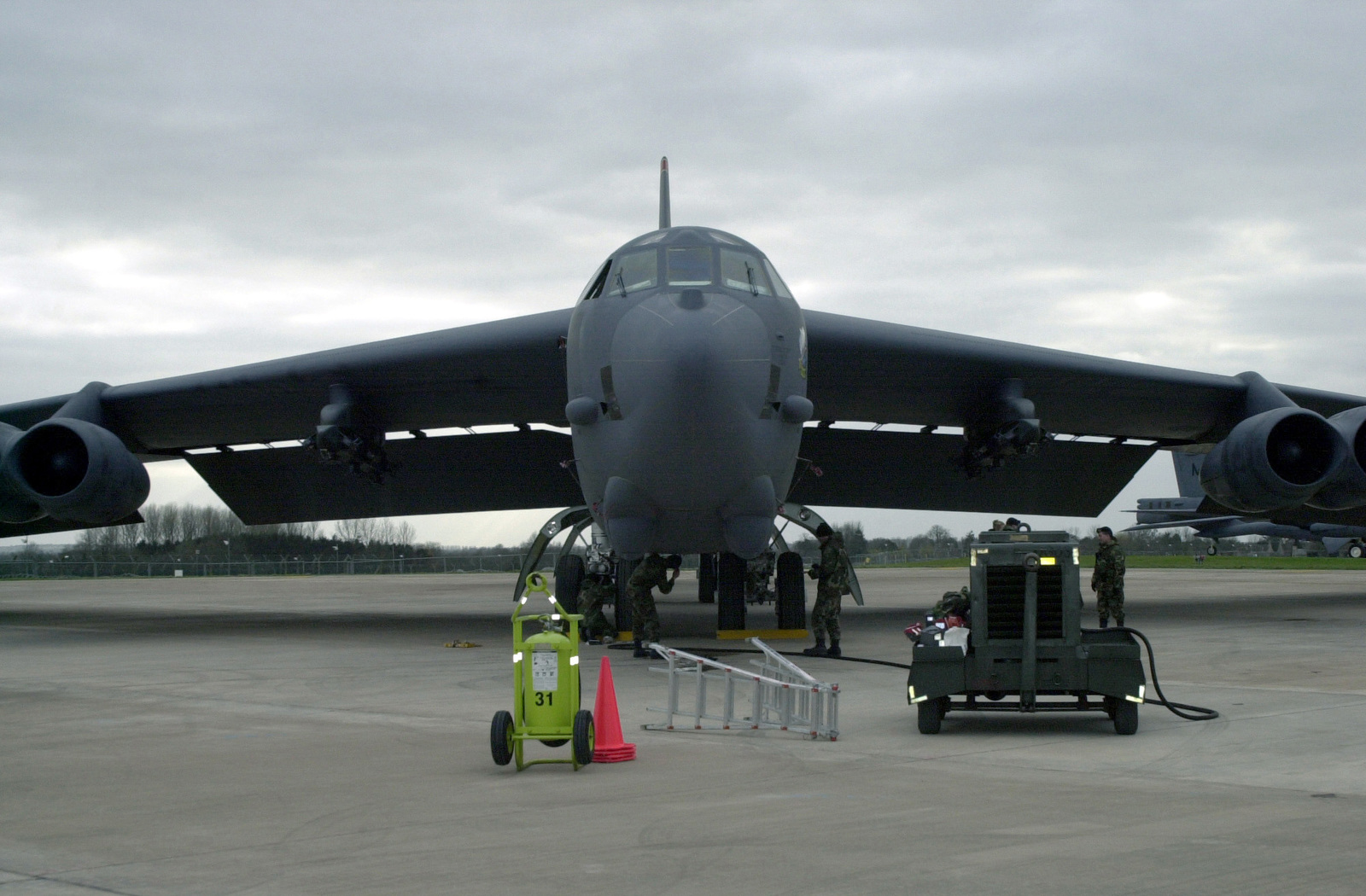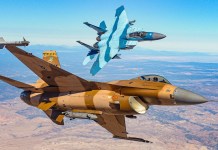The US Air Force’s aging fleet of B-52 long-range strategic bombers, which first flew in the 1950s, will stay operational for at least 30 more years, the US Air Force said on December 15.
“The B-52 has and will continue to serve as a vital component of the nuclear triad,” the US Air Force Global Strike Command (GSC), which directs strategic deterrence and long-range strike operations, told Newsweek.
Originally designed as a high-altitude, high-speed penetrating nuclear bomber, the B-52 now provides long-range cruise missile carriage and launch capabilities using the AGM-86B Air-Launched Cruise Missile (ALCM), GSC said.

“Over the next decade the B-52 will receive the ALCM’s follow-on in the LRSO missile,” GSC said. “Once these efforts are complete, the aircraft will have sufficient structural longevity to serve into the 2050s,” the command said
Boeing Bombers Senior Program Director Jennifer Wong told Newsweek the air force currently deploys 76 B-52s and plans to keep them all flying through a Commercial Engine Replacement Program, Radar Modernization Program, and an Advanced Extremely High-Frequency Satellite.
B-52 – A Strategic Bomber
The B-52H, also known as the Stratofortress or the Buff, is a long-range, large-payload multirole bomber. It is the US Air Force’s major strategic nuclear and conventional weapons platform and supports anti-surface and submarine warfare tasks for the US Navy.
With a length of 159ft 4in (48.5m) and a takeoff weight of 488,000lb, the B-52H is a very large aircraft (220,000kg). The all-metal skin carries a significant amount of flight load. The aircraft’s surface on the forward section of the fuselage has a wrinkled appearance while it is grounded. When the crew compartment is pressurized as the plane climbs in altitude, the skin expands and smooths out.
The Boeing B-52 Stratofortress, which first flew in April 1952 and is the world’s longest-serving combat aircraft, celebrated its 50th anniversary in April 2002. In June 2009, the US Air Force granted Boeing a $750 million, 10-year engineering sustainment program (ESP) contract to provide engineering and technical support for the B-52H and its components, as well as support and test equipment and a system integration laboratory.
The B-52 SOJ, a project to expand the B-52’s mission to include standoff jamming, was discontinued in 2006. It entailed installing new huge wingtip pods weighing up to 2,260kg that would house a suite of powerful jamming equipment. A total of 16 SOJ systems were needed.
However, in October 2007, Boeing announced a collaboration with Northrop Grumman to develop the B-52H core component jammer (CCJ) program, a new electronic attack capability for the B-52. In June 2008, Boeing was awarded a contract by the US Air Force to develop the technology needed for the CCJ program.

With a weapons payload of almost 70,000 lb, the B-52H can carry the widest range of weaponry of any combat aircraft. There are 12 AGM-129 advanced cruise missiles (ACMS), 20 AGM-86A air-launched cruise missiles (ALCM), and eight bombs in the nuclear weapons arsenal.
The standard weapons payload includes eight AGM-84 Harpoon missiles, four AGM-142 Raptor missiles, 51,500lb bombs, 301,000lb bombs, 20 AGM-86C conventional air-launched cruise missiles (CALCM), 12 joint stand-off weapons (JSOW), 12 joint direct-attack munitions (JDAM) and 16 wind-corrected munitions dispenser (WCMD). The B-52 first deployed Wind Corrected Munitions Dispenser (WCMD) in Afghanistan in 2002. JSOW was first deployed in 2003 as part of Operation Iraqi Freedom.
Additionally, the joint air-to-surface standoff missile (JASSM), which was approved for operational use in October 2003, was first installed aboard a Boeing B-52 Stratofortress.
The Northrop Grumman Litening II laser targeting pod was mounted to the B-52 during Operation Iraqi Freedom in April 2003, and it was utilized to strike targets in northern Iraq. The US Air Force handed Boeing an eight-year, $11.9-billion contract to modernize B-52H weapons systems in September 2010.

It is powered by eight jet engines mounted under the wings in four twin pods. The plane has 10 internal and two external fuel tanks with a total capacity of about 181,000 liters, giving it an unrefueled range of nearly 8,600 miles.
With one air refueling, the operational range is 7,500nm. The US Air Force awarded Boeing a contract in April 2005 for the system design and development (SDD) of the B-52 combat network communications technology (CONECT) program, which provides the aircraft with network-centric operations (NCO) capability.
All flight tests required for the B-52 CONECT program to receive low rate initial production (LRIP) certification from the US Air Force were completed at Edwards Air Force Base in California in December 2011. In 2012, the LRIP received Milestone C authorization.
Why USAF Wants B-52 To Stay In Service
If the Air Force continues to pursue its existing plans, the B-52 will be in service until 2050, marking it the first, and possibly only, aircraft to fly continuously for a century.
During its early design phase, the B-52 progressively evolved into a swept-wing aircraft with eight jet engines capable of flying thousands of miles without refueling.
Its current range is around 8,600 miles while flying at 525 miles per hour with a 35-ton bomb load, although it can be refueled in the air and fly much further.
In Afghanistan, B-52 operators displayed their ability to offer close air support to ground troops using a range of precision-guided weapons. The bomber can conduct maritime surveillance and sea control over large areas, laying mines if required. Their capacity to stay in the air for long periods of time makes them ideal for surveillance or electronic jamming.
The aircraft is not stealthy but electronic countermeasures, towed decoys, and other measures have been installed on the bomber to thwart adversary attempts to target it. In 2010, the Air Force made a decision to stop assigning nuclear gravity bombs to the B-52, understanding that its deterrence mission relied on hitting targets with cruise missiles from beyond enemy defense range.
One of the reasons the Air Force plans to retain flying the Stratofortress until 2050 is that most of the B-52s in the fleet are ready for action on short notice on any given day. The Air Force has made significant progress in improving the mission-capable rate of the B-1 and B-2, but neither bomber is expected to match the B-52’s combat readiness.
- Contact the author at ashishmichel@gmail.com
- Follow EurAsian Times on Google News




